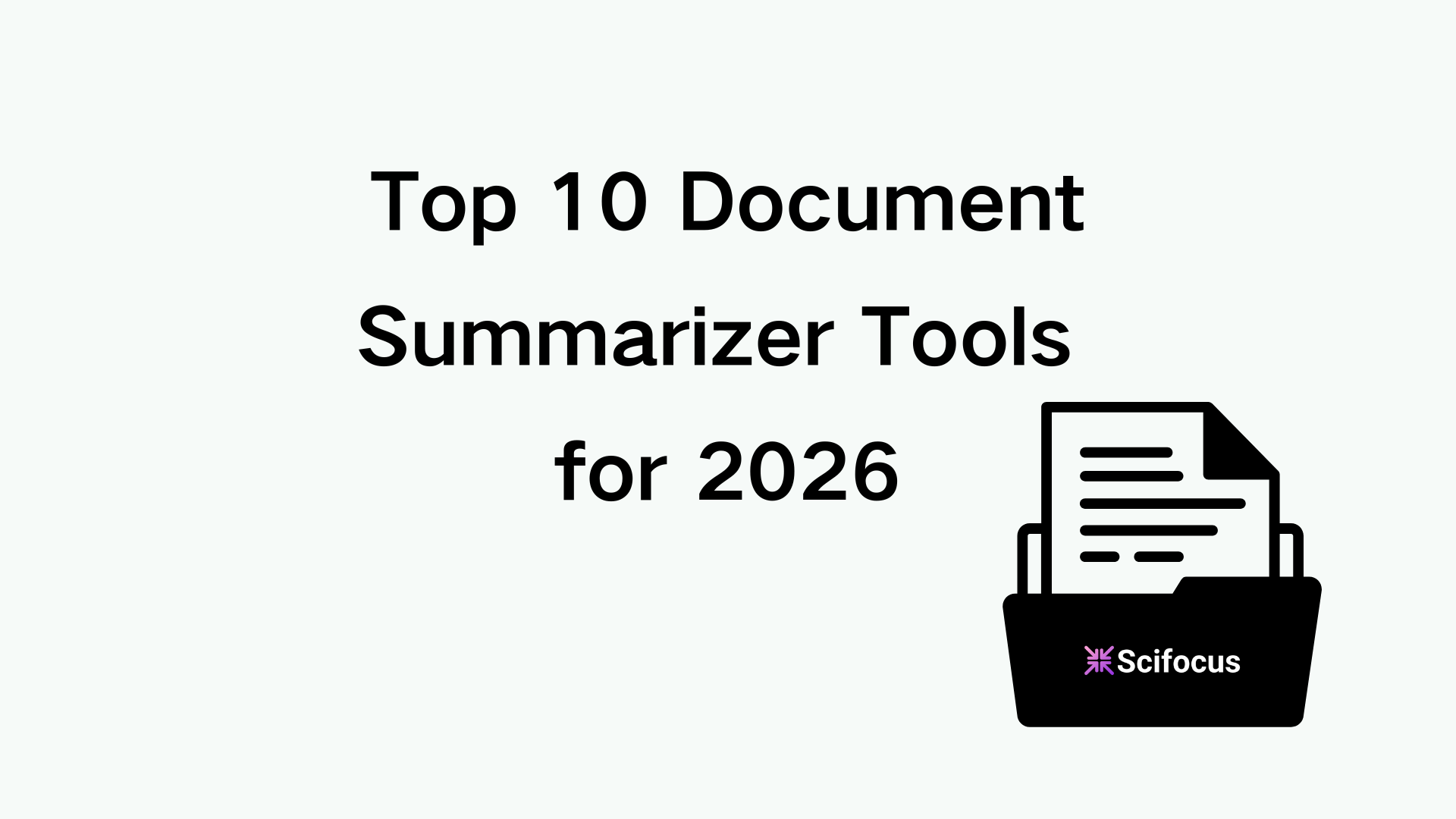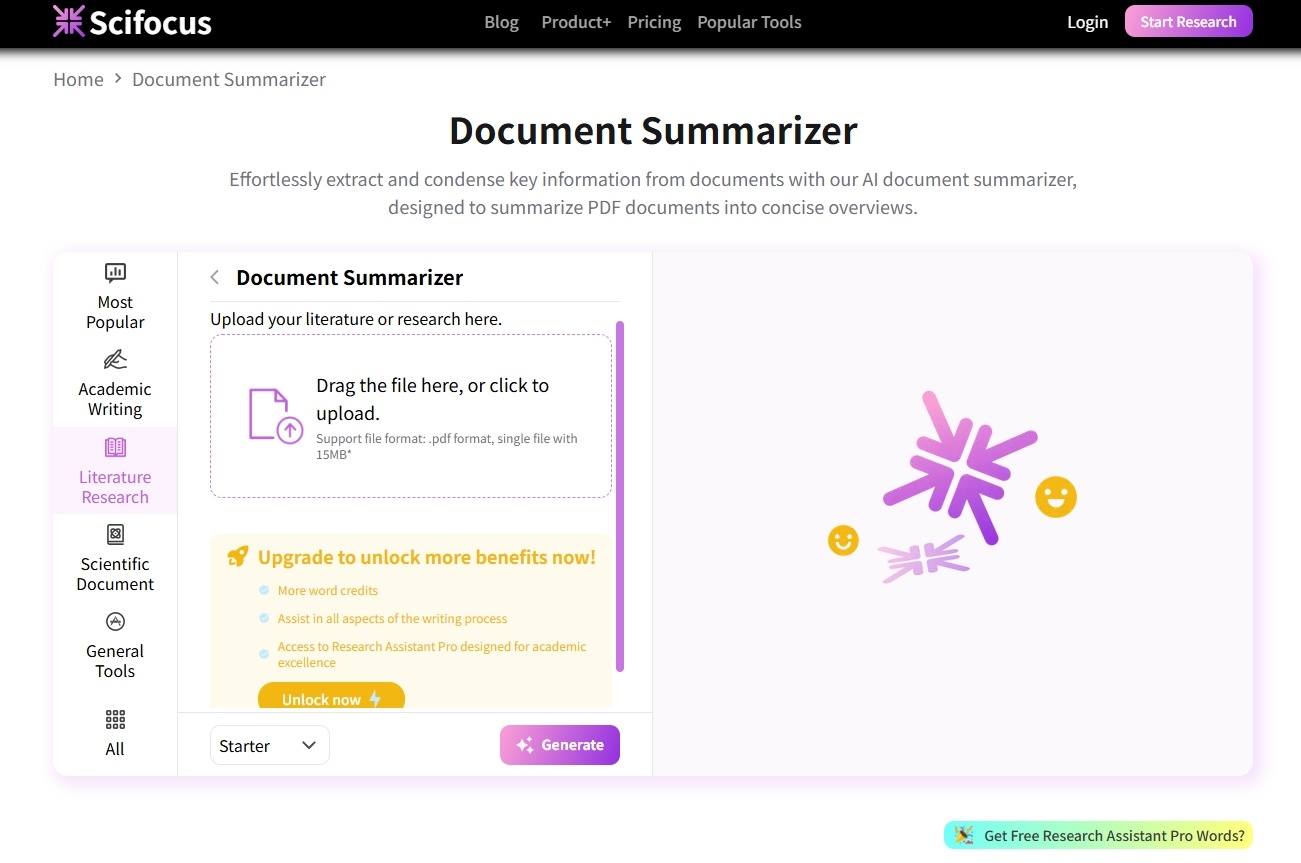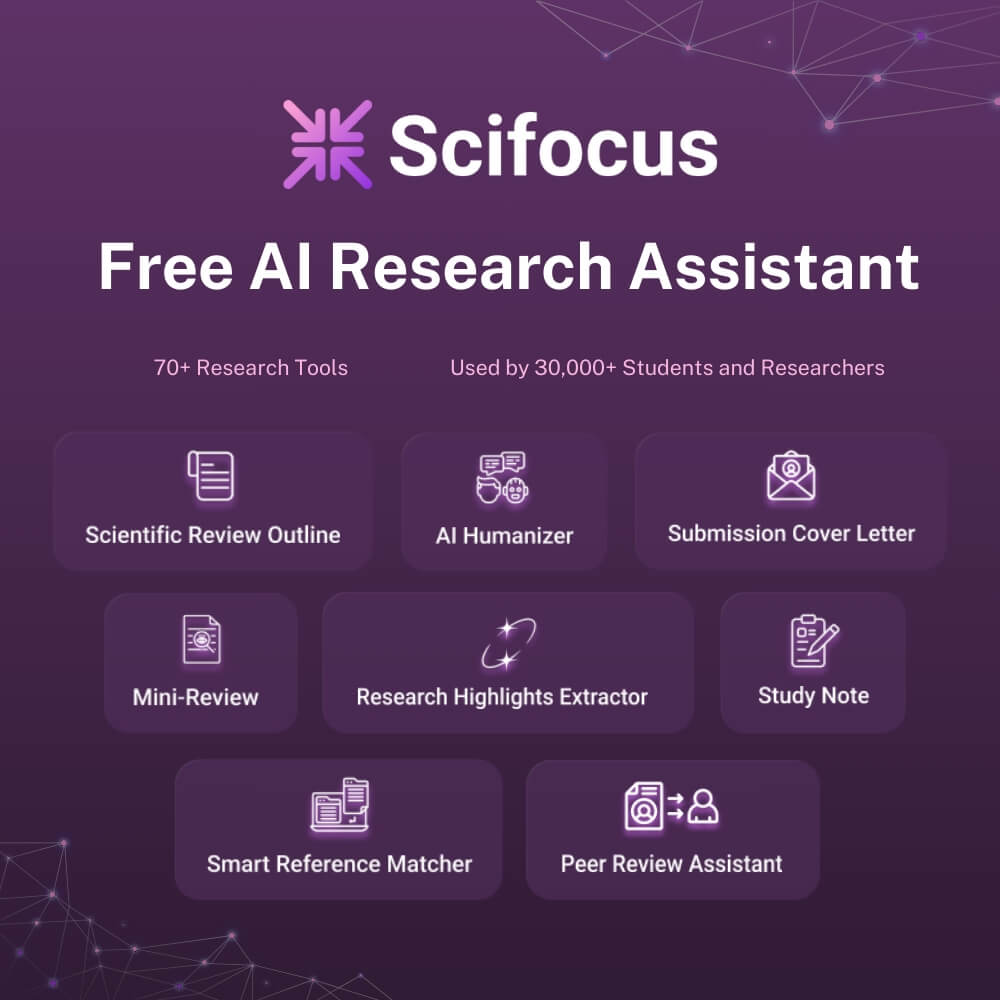Table of content
Top 10 Document Summarizer Tools for 2026

How I Picked the Tools
Here are the criteria I used (so you know what you’re getting):
- PDF support + other formats (bonus if it handles scanned or big files)
- True summarization (captures meaning, not just extracts sentences)
- Student-friendly pricing / free tier
- Academic fit (if you’re studying or doing research)
- 2026 readiness (features that feel modern, not last-year)
With those in mind, here are my top picks for 2026.Each tool is unique—so think about you (your workload, your budget, your format) when picking.
1. Scifocus Document Summarizer — The Academic All-Rounder

If I had to pick one tool for students juggling papers, research, and studying—this would be it. Scifocus is built with academic workflows in mind.
What makes it stand out:
- Optimised for PDFs and structured documents (abstract, methods, etc).
- “Normal-reader” output: readable, usable, doesn’t feel like AI wrote it.
- Great for students who need to understand documents, not just skim them.
Try it here: /trial/document-summarizer
Main site: scifocus.ai
If you’ve got thesis drafts, lit reviews, big reading lists—it’s a top contender.
2. QuillBot Summarizer — Student-Friendly, Flexible
QuillBot has always been a go-to for writing/paraphrasing; its summarizer is solid too. If your documents are less “dense academic paper” and more “course reading” — this is a good pick.
Free tier, simple UI, decent output. Less ideal for super heavy research-paper style docs though.
3. Scholarcy — Research-Paper Specialist
For serious academic work—literature reviews, theses—Scholarcy is built for that. Takes full articles and breaks them into structured summaries + citations.
If you’re doing heavy reading, this one helps.
4. Adobe Acrobat AI Assistant — Premium, Big-File Capable
In 2026, a major option: Adobe Acrobat’s AI Assistant for documents. It supports PDFs, conversations with docs (“chat with your PDF”), large files, scanned documents. (Adobe)
Great if you’re comfortable with cost and need enterprise-style power.
5. SciSummary — STEM/Technical Focus
When you’re reading engineering papers, med-science articles, or anything dense—tools like SciSummary handle jargon and structured research well.
Useful if you’re in STEM.
6. GetDigest — Free Tier with Control
If budget is tight, GetDigest offers length-control (compress to X%) and decent summary output. Good for coursework, quick reading, light research.
7. Mapify / Visual Summariser — For Visual Learners & Presentations
Some summarizers now generate mind-maps, visual summaries, or slides. If you learn visually or need to prep slides from documents, these tools shine. (See the mind-map-type features in the 2025 review of PDF summarizers.) (Xmind)
8. Votars — Multi-Format: Documents, Audio, Video
If your reading load isn’t just PDFs but also recorded lectures, transcripts, audio files—Votars is useful. It handles multi-format summarisation.
9. Toolsmart AI Summarizer — Free, Student-Safe
According to a 2025 list of “AI Study Note Summarizers”, Toolsmart offers free, ad-free summarizer for notes/PDFs/PPTs, powered by ChatGPT-4o. (devopsschool.com)
For students needing simple, reliable summarisation—this fits.
10. Decopy / Other Free Options — Budget Backup
If you just need something quick for occasional use, Decopy or other free tools give you “good enough” summarisation. Less depth, less polish, but still useful.
Which One Should You Use?
Depends on your situation:
- Undergrad/General-Reading: Scifocus, QuillBot, GetDigest, Toolsmart are solid.
- Deep Reading/Research: Scifocus, Scholarcy, SciSummary.
- Mixed Media/Work + Study: Votars, Adobe Acrobat AI Assistant.
- Budget-Tight: Decopy or free-tier versions of above.
If I were you (student with big reading load + maybe research), I’d place Scifocus right up there—it gives you strong academic fit and usability.
How to Use Scifocus Document Summarizer (step-by-step)
Open Scifocus Document Summarizer
- Upload your file — simply drag the PDF into the upload area or click to select it from your computer. Supported format: .pdf only, single file with a size limit of 15 MB.
- Click the “Generate” button. The AI will condense your document into a summary, highlighting key ideas and insights.
- Once the summary appears, copy it or export/use it in your notes, presentations, or research workflow.
- Review the summary quickly — check if the core sections (like methods, results, conclusions) are captured. If you spot missing pieces, go back to the original PDF for deeper reading.
Final Thoughts
If you’ve got reading piles growing, deadlines looming, and trying to balance student life + productivity—then a document summariser isn’t optional. It’s essential.
In the sea of options for 2026, Scifocus still stands out as the student-friendly, academically strong tool.
Check it out: scifocus.ai
And if you’re ready to test: document-summarizer
Because your time is limited—but your clarity doesn’t have to be.
FAQs
1. What is a “document summarizer pdf” tool?
It’s a tool designed to take a PDF (often long or complex) and produce a concise summary that retains the main ideas, logic and key data—so you don’t have to slog through every page.
2. Are there good “document summarizer free” options in 2026?
Yes—tools like Toolsmart, GetDigest, and free tiers of bigger tools offer effective summarisation for many students. Just check limits around formats and file size.
3. Can document summarizer AI handle academic research papers effectively?
Some can—especially those tailored for academia (like Scifocus, Scholarcy). The key is choosing one that recognises structure (abstract/method/results) and doesn’t just pull sentences.
4. How do I pick the best summariser for myself?
Look at: file formats you use, how deep your documents are (light reading vs research paper), your budget, and whether you need integration with other tools. Match those needs to the features.
5. Will relying on a summariser hurt my learning?
Not if you use it smartly. Treat it as support—it helps you decide what to read deeply, but it doesn’t replace critical thinking, note-taking, or reading when needed.
Did you like this article? Explore a few more related posts.
Start Your Research Journey With Scifocus Today
Create your free Scifocus account today and take your research to the next level. Experience the difference firsthand—your journey to academic excellence starts here.
